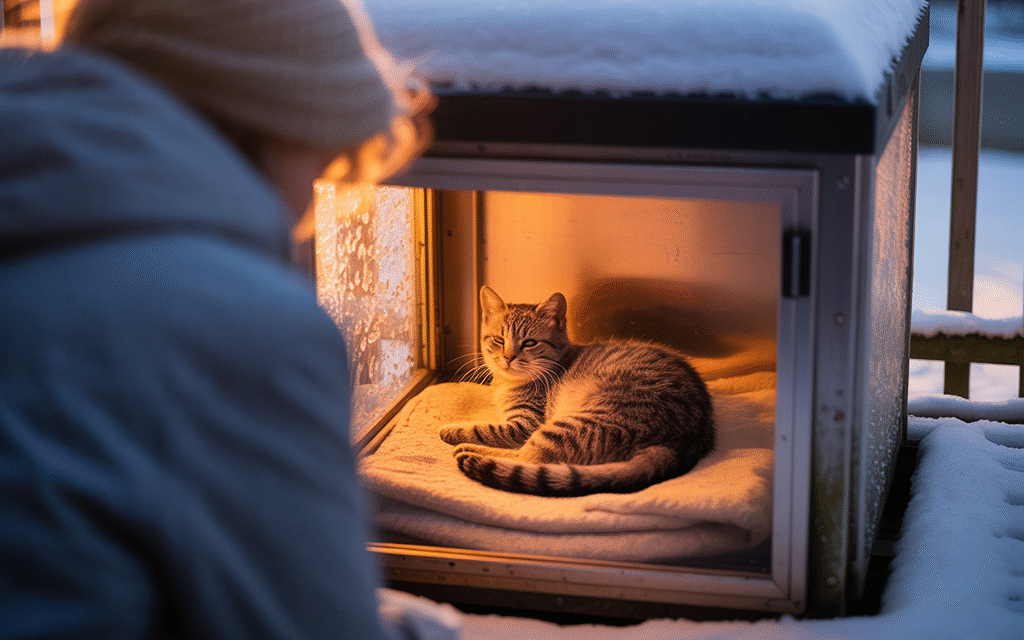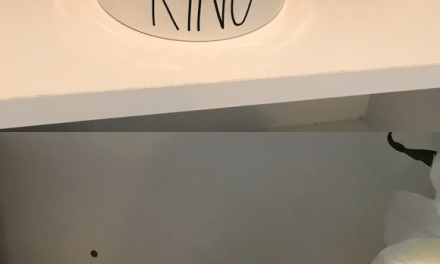Before & After: How a Heated Cat House Can Save Outdoor & Feral Cats This Winter
The story of what changes when a cat finally gets warm.
Before Warmth: The Winter No One Sees
Cold doesn’t announce itself.
It creeps in.
First as a chill against the ground… then a sharp sting that burns the nose… then a weight that presses into bone. Outdoor and feral cats feel every degree of that descent.
They don’t have the luxury of choosing warmth.
They look for heat wherever heat hides—under car engines, behind HVAC units, curled near dryer vents where exhaust air spills into the night.
When temperatures drop, survival becomes math:
- Moisture robs body heat faster than dry air.
- Wind pushes cold under fur and into skin.
- Once a cat’s core temperature slips below safe range, instinct isn’t enough.
You don’t have to see hypothermia to know it’s real.
You can feel the fear of it in the quiet.
The search you made—“best heated cat house for winter,” “heated outdoor cat shelter,” “feral cat protection cold weather”—isn’t casual curiosity.
It’s responsibility.
It’s worry.
It’s love disguised as research.
You’re trying to outrun regret.
After Warmth: What Changes When Safety Finds Them
Now picture this—
a different morning.
You step outside into cold air, expecting the familiar emptiness.
But instead, you find a small shape curled inside a heated outdoor cat house—peaceful, tucked into straw, warm from the heated pad beneath.
The wind cuts through your coat.
But inside that shelter?
Dry. Still. Quiet.
For the first time all season, you breathe.
Because you didn’t just set up a cat house.
You created a refuge.
The Real Magic: Why Heated Cat Houses Work
Warmth isn’t the point.
Heat retention is.
Cats don’t need a sauna—they need a microclimate: a tiny protected capsule where their body heat stays with them instead of leaking out into the cold.
What creates that?
| Element | What It Actually Does |
|---|---|
| Insulation | Captures body heat and rebounds warmth inward |
| Raised floor | Blocks frozen ground from pulling heat away |
| Wind protection | Stops drafts from stripping warmth |
| Heated pad (low-voltage) | Maintains safe, consistent warmth |
Outdoor cats aren’t stubborn—they’re strategic.
They use shelters that feel dry, enclosed, and stable, not necessarily “warm.”
A heated cat house just gives them what nature can’t.
The Top Heated Cat Houses for Winter (Ranked by Real-Life Success)
These aren’t theoretical recommendations.
They’re the shelters that outdoor and feral cats actually choose.
🥇 Most Reliable in Extreme Cold
K&H Outdoor Heated Kitty House (Heated Pad Included)
- Waterproof fabric
- Insulated walls
- Chew-resistant, low-voltage heated pad
- Multiple exit points to prevent cornering by predators
Perfect for: porches, patios, side-yard placements.
🥈 Best for Feral Cat Colonies or Multiple Cats
K&H Multi-Cat A-Frame Heated Shelter
- Roomy enough for two or three cats
- Wide entrance → less territorial hesitation
- Strong heat retention
Perfect for: barn cats, colony stations, winter feeding sites.
💸 Best Budget Option
EcoFlex Outdoor Heated Igloo Shelter
- Wind-smart shape
- Durable composite material
- Great for tight spaces
Perfect when you need warmth without a huge footprint.
Where Warmth Becomes Survival: Heated vs. Non-Heated
Here’s a truth people don’t expect:
Blankets don’t warm cats.
They trap moisture—then steal body heat.
Straw, on the other hand?
It reflects warmth and pushes moisture away.
| Bedding Material | Effect on Warmth |
|---|---|
| Straw | Dry, insulating, heat-reflective ✔ |
| Blankets/Towels | Pull heat away; get damp ✖ |
So when the internet argues, “just give them blankets,” know this:
Blankets are comfort for humans.
Straw is survival for cats.
Heated + insulated + straw = the winter trifecta.
The Placement Trick No One Talks About
A heated cat house can be perfect—and still stay empty.
Cats avoid shelters that feel exposed.
To make a shelter irresistible:
- Tuck it against a wall or under a porch overhang (wind break).
- Elevate it a few inches—concrete and soil suck warmth downward.
- Face the entrance away from wind direction.
- Don’t hover. Cats explore when people aren’t watching.
One small adjustment—a fence, a bale of straw angled as a wind corridor—
and suddenly the shelter becomes a sanctuary.
How to Set Up a Heated Cat House in Under 20 Minutes
- Position the shelter near places cats already move through (pathways, food stations).
- Add straw or reflective Mylar—never towels.
- Plug heated pad into a GFCI outdoor-safe outlet.
- Leave a few treats nearby the first night.
- Walk away.
They always come back for warmth.
Cost to Run (Spoiler: It’s Less Than a Latte)
Most heated pads pull 20–40 watts.
Running one all winter averages:
$3–$8 per month.
That’s the cost of a single comfort item…
to give something living a reason to survive winter.
If You’re Asking These Questions, You’re Already the Right Person
“Will a heated cat house really keep them warm?”
Yes. The combination of insulation + heated pad + straw creates a stable internal climate.
“Is it safe to leave on overnight?”
If the heating pad is UL-certified and low-voltage, it’s designed for constant outdoor use.
“Will feral cats actually use it?”
Absolutely—especially if they already trust the area.
“What bedding should I use?”
Straw. Always straw. Towels trap moisture.
Products / Tools / Resources
These are the shelters and materials that consistently perform in freezing climates:
- K&H Outdoor Heated Kitty House
- K&H Multi-Cat A-Frame Heated Shelter
- Straw bedding (not hay or blankets)
- Reflective survival Mylar (optional insulation upgrade)
- Outdoor-rated GFCI extension cord
- Highest-rated warm cat house for the winter – See it here!
Each item above is chosen because feral and outdoor cats instinctively accept them—and because they work when the temperature doesn’t.





Recent Comments